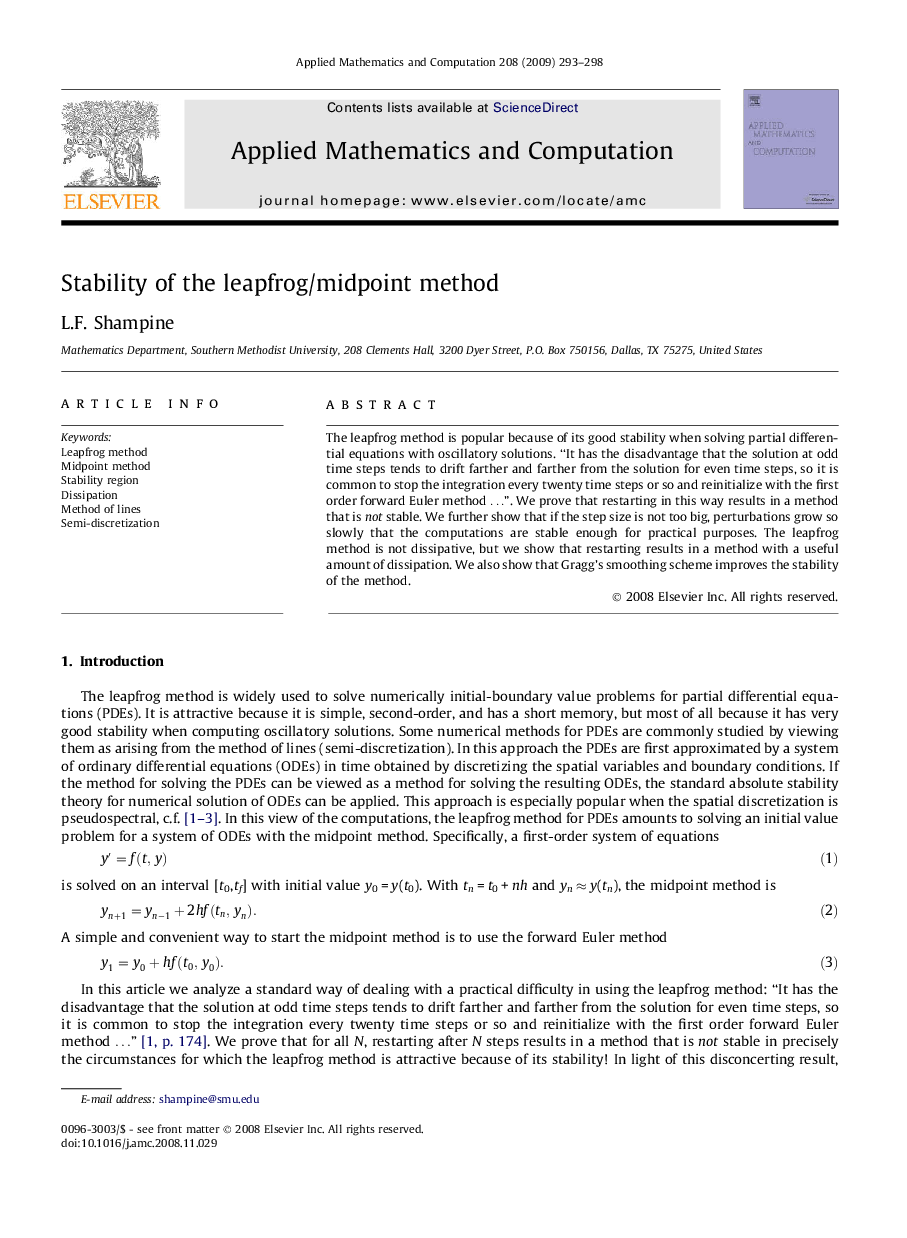| Article ID | Journal | Published Year | Pages | File Type |
|---|---|---|---|---|
| 4633856 | Applied Mathematics and Computation | 2009 | 6 Pages |
Abstract
The leapfrog method is popular because of its good stability when solving partial differential equations with oscillatory solutions. “It has the disadvantage that the solution at odd time steps tends to drift farther and farther from the solution for even time steps, so it is common to stop the integration every twenty time steps or so and reinitialize with the first order forward Euler method ⦔. We prove that restarting in this way results in a method that is not stable. We further show that if the step size is not too big, perturbations grow so slowly that the computations are stable enough for practical purposes. The leapfrog method is not dissipative, but we show that restarting results in a method with a useful amount of dissipation. We also show that Gragg's smoothing scheme improves the stability of the method.
Related Topics
Physical Sciences and Engineering
Mathematics
Applied Mathematics
Authors
L.F. Shampine,
